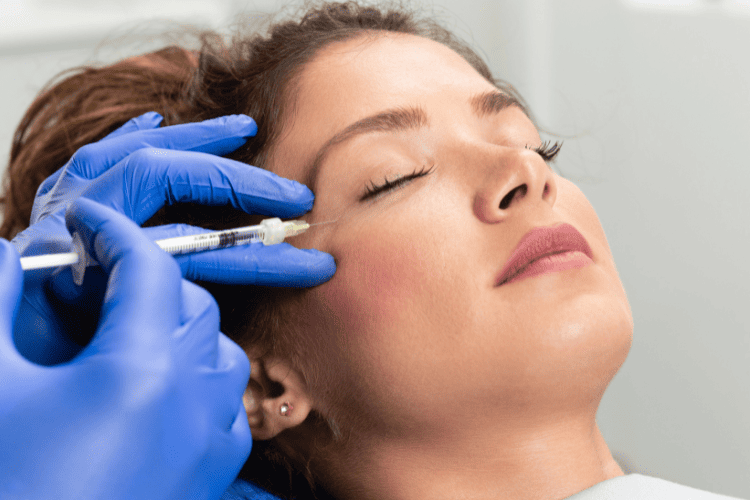Botox Maintenance 101: When to Schedule Your Touch-Ups
Renowned for its power to smooth away wrinkles and prevent visible signs of aging, Botox now reigns as the most popular non-surgical cosmetic treatment worldwide.
The immediate effects of Botox are undeniably transformative, but, as with arguably most things in life, they are temporary. If you want to keep that glow, Botox maintenance has to become part of your beauty routine.
Regular Botox touch-ups are the key to sustaining that consistently smooth, youthful look, so that the benefits of your initial treatment continue shining over time.
Keep reading to find out just how often you should get Botox touch-ups, what factors influence how long it will last, and how to maintain a beautiful, natural visage over time.
How Botox Works and How Long It Lasts
Before diving into maintenance, let's briefly recap the magic of Botox. Botox and other neuromodulators like Dysport and Xeomin temporarily paralyze specific facial muscles whose use over time causes dynamic wrinkles. By inhibiting the nerve signals that tell these muscles to move, Botox softens facial lines, giving the skin a much smoother appearance. The most common areas treated include forehead lines, frown lines, and crow’s feet. Typically, you’ll be able to see the effects of Botox within a few days, and the full results come through around two weeks post-injection. The longevity of results generally ranges from 3 to 4 months, but this is just a general guideline; individual experiences vary drastically.7 Factors That Affect Botox Longevity
Why does Botox last longer in some people than others? There are a few variables at play that can influence how long your Botox results last, and evaluating what applies to you can help you determine an appropriate maintenance schedule. Here are 7 factors that affect the timeline:- Metabolism: People with a faster metabolism can find that their body breaks down the neuromodulator more quickly.
- Muscle Strength: Stronger, more active muscles, like very expressive frown lines, may require higher doses or more frequent touch-ups.
- Dosage and Injection Technique: The amount of Botox administered and the precision of the injection technique by your provider will impact the longevity of results, which is why choosing a reputable med spa for your Botox is so important.
- Exercise Intensity: Highly active individuals and people who do intense workouts might notice a slightly shorter duration as their metabolism is generally higher.
- Sun Exposure: Excessive sun exposure can accelerate skin aging and potentially diminish the longevity of some aesthetic treatments by indirectly affecting how quickly lines reappear. Always use SPF!
- Stress: While not directly linked to Botox breakdown, chronic stress can contribute to muscle tension in facial expressions, potentially leading to lines returning sooner.
- Individual Response: Just like any medical treatment, each person responds uniquely, so some naturally retain the effects of Botox for longer periods than others.
General Botox Maintenance Timeline
While a personalized plan with your injector is always best, here’s a general guideline for when to schedule Botox touch-ups:First-Time Users
If this is your initial foray into Botox, you might find that you need a touch-up a bit sooner, like after 8 to 10 weeks. This initial phase allows your muscles to "learn" to relax in their new, smoother state, and your injector can assess your unique response to the treatment.Regular Users
If you’ve been consistently receiving Botox, a maintenance schedule of every 12 to 16 weeks is common to prevent the full return of muscle activity and maintain a consistently smooth appearance.Advanced Users
Depending on individual response, the treated area, and the cumulative effects of regular treatments, some people who’ve used Botox for a long time find they can stretch maintenance sessions to every 4 to 5 months.How Do You Know When It’s Time for a Touch-Up?
Forget a strict calendar date. You’ll know when to schedule a Botox touch-up by observing your own facial expressions and skin. Paying attention to these subtle cues can help you proactively schedule your touch-up before the full effects of your previous treatment wear off. Here are some tell-tale signs that it might be time for your next appointment:- Expression lines begin to reappear: You'll notice dynamic wrinkles returning, though perhaps not as deep as they were pre-treatment.
- Skin starts to feel less smooth during facial movement: When you make expressions, the skin might feel less relaxed and more creased.
- Reduced lift or relaxation in treated areas: If your brows or crow's feet had a noticeable lift or softening, you may see that diminishing.
- Makeup settling into lines more noticeably: Foundation or powder may begin to crease in areas where lines start to re-emerge.




